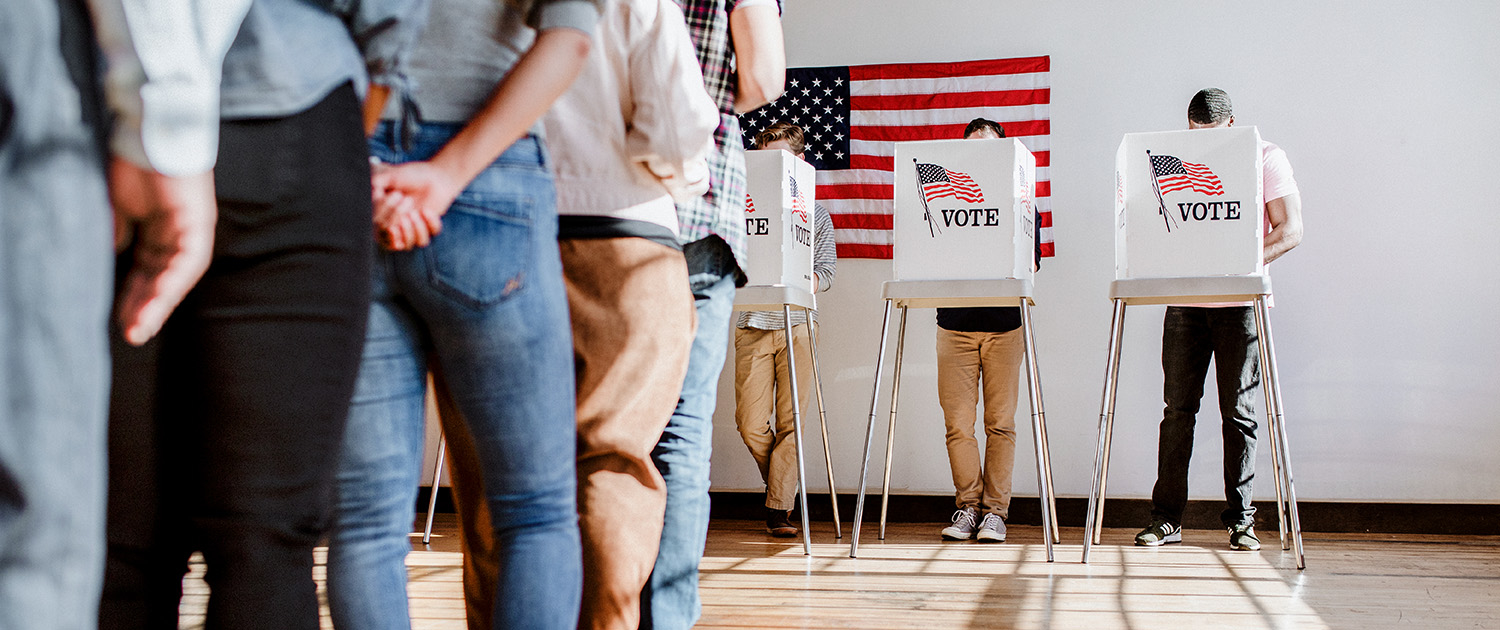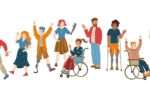Immigration & Elections
Almost since America’s founding, we have called ourselves an immigrant nation but fought over who should immigrate, how, and how many. Currently, the immigrant population is (as a percentage) the largest in 100 years, with 45 million (or 13.7% of the population) residing here. Perhaps as a result, the topic of immigration (legal and illegal) has been an especially contentious issue in recent elections and the upcoming midterm election. How did we get here?
The 1850 census found that 2.2 million of us, or about 10% of the population, were foreign born. They were part of a large immigration wave that had been arriving steadily since 1815 and continued mostly uninterrupted until the Great Depression.
Those arriving during these years contributed to the massive growth of the East Coast urban population. Voting regulations were then primarily left to the states, so immigrants could usually vote in elections soon after arriving.
Political parties were eager to recruit immigrants “right off the boat.” Parties had much stronger institutional structures then, and leaders knew that integrating an immigrant into the party could ensure their vote for decades. As political scientist Steven E. Schier put it, “Long before many of those newcomers fully understood what it was to be American, they knew quite well what it meant to be a Democrat or a Republican.”
The changes immigration caused in America’s demographics and economy in turn caused changes in the political landscape:
- In the 1850s, the anti-immigrant, anti-Catholic Know-Nothing party arose and had some success in electing members of Congress and pressing for immigration controls.
- Beginning in 1882, with the Chinese Exclusion Act, Congress passed many restrictions on immigration, including banning immigration from entire continents and adding a literacy test, in an effort to eliminate wage competition.
- In 1890, President Harrison designated Ellis Island as a federal immigration station. More than 12 million immigrants will pass through.
- In 1942, the Bracero Program brought millions of Mexican immigrants to American farms to replace workers who had gone to war.
- 1965, the Immigration and Nationality Act of 1965 eliminated country quotas and ended the Bracero program. Because of this and post-war prosperity in Europe, the majority of legal immigrants are from Asia and Latin America.
- 1986, the Immigration Reform and Control Act addressed illegal immigration with fines for those who employ undocumented workers, increased border enforcement, and amnesty for nearly 3 million undocumented immigrants.
In recent years, the issue of illegal immigration has been front and center in each federal election. The problems confronting America due to mass migration from Latin America seem intractable, and political leadership finds little common ground. Voices on the right criticize the lack of border security and talk up crimes committed by undocumented immigrants. Voices on the left call for systemic reforms and point out that many immigrants are refugees fleeing from crime and violence in their home countries. The promise to build a border wall helped Donald Trump reach the White House in 2016; the perception of his immigration policies as cruel and xenophobic contributed to his defeat in 2020.
Our profound political polarization has produced polling results that are both alarming and encouraging. An Associated Press poll found that a third of Americans believe current immigration policies are part of an intentional conspiracy to replace native-born Americans with immigrants who are more likely to vote for liberal politicians. However, the same poll found two- thirds of us believe immigration makes America stronger.
In this case, the facts are on the side of the latter group. For over a century now, non-citizens have been unable to vote in federal elections. Meanwhile, despite the fact politicians portray them as a drag on the economy and dependent on the welfare state, immigrants are a powerful driver of our economy:
- A 2017 study found that immigrant-owned businesses contributed $1.3 trillion to the economy each year.
- Approximately 1 in every 10 workers is employed at a private company owned by immigrants
- 221 of the companies on the 2020 Fortune 500 had at least one founder who immigrated or was the child of immigrants.
- Immigrants are twice as likely as native-born Americans to found a business. Between 1996 and 2011 the rate of businesses being founded by immigrants grew by 50%, while the rate of founding by native-born Americans dropped by 10%.
Immigration policy is difficult, complex, and always involves tradeoffs. However, if voters consider the ways in which immigrants—and efforts to welcome them into the American family—make us a stronger nation, they will make wise decisions that pay off for future generations.
Immigration & Elections
Almost since America’s founding, we have called ourselves an immigrant nation but fought over who should immigrate, how, and how many. Currently, the immigrant population is (as a percentage) the largest in 100 years, with 45 million (or 13.7% of the population) residing here. Perhaps as a result, the topic of immigration (legal and illegal) has been an especially contentious issue in recent elections and the upcoming midterm election. How did we get here?
The 1850 census found that 2.2 million of us, or about 10% of the population, were foreign born. They were part of a large immigration wave that had been arriving steadily since 1815 and continued mostly uninterrupted until the Great Depression.
Those arriving during these years contributed to the massive growth of the East Coast urban population. Voting regulations were then primarily left to the states, so immigrants could usually vote in elections soon after arriving.
Political parties were eager to recruit immigrants “right off the boat.” Parties had much stronger institutional structures then, and leaders knew that integrating an immigrant into the party could ensure their vote for decades. As political scientist Steven E. Schier put it, “Long before many of those newcomers fully understood what it was to be American, they knew quite well what it meant to be a Democrat or a Republican.”
The changes immigration caused in America’s demographics and economy in turn caused changes in the political landscape:
- In the 1850s, the anti-immigrant, anti-Catholic Know-Nothing party arose and had some success in electing members of Congress and pressing for immigration controls.
- Beginning in 1882, with the Chinese Exclusion Act, Congress passed many restrictions on immigration, including banning immigration from entire continents and adding a literacy test, in an effort to eliminate wage competition.
- In 1890, President Harrison designated Ellis Island as a federal immigration station. More than 12 million immigrants will pass through.
- In 1942, the Bracero Program brought millions of Mexican immigrants to American farms to replace workers who had gone to war.
- 1965, the Immigration and Nationality Act of 1965 eliminated country quotas and ended the Bracero program. Because of this and post-war prosperity in Europe, the majority of legal immigrants are from Asia and Latin America.
- 1986, the Immigration Reform and Control Act addressed illegal immigration with fines for those who employ undocumented workers, increased border enforcement, and amnesty for nearly 3 million undocumented immigrants.
In recent years, the issue of illegal immigration has been front and center in each federal election. The problems confronting America due to mass migration from Latin America seem intractable, and political leadership finds little common ground. Voices on the right criticize the lack of border security and talk up crimes committed by undocumented immigrants. Voices on the left call for systemic reforms and point out that many immigrants are refugees fleeing from crime and violence in their home countries. The promise to build a border wall helped Donald Trump reach the White House in 2016; the perception of his immigration policies as cruel and xenophobic contributed to his defeat in 2020.
Our profound political polarization has produced polling results that are both alarming and encouraging. An Associated Press poll found that a third of Americans believe current immigration policies are part of an intentional conspiracy to replace native-born Americans with immigrants who are more likely to vote for liberal politicians. However, the same poll found two- thirds of us believe immigration makes America stronger.
In this case, the facts are on the side of the latter group. For over a century now, non-citizens have been unable to vote in federal elections. Meanwhile, despite the fact politicians portray them as a drag on the economy and dependent on the welfare state, immigrants are a powerful driver of our economy:
- A 2017 study found that immigrant-owned businesses contributed $1.3 trillion to the economy each year.
- Approximately 1 in every 10 workers is employed at a private company owned by immigrants
- 221 of the companies on the 2020 Fortune 500 had at least one founder who immigrated or was the child of immigrants.
- Immigrants are twice as likely as native-born Americans to found a business. Between 1996 and 2011 the rate of businesses being founded by immigrants grew by 50%, while the rate of founding by native-born Americans dropped by 10%.
Immigration policy is difficult, complex, and always involves tradeoffs. However, if voters consider the ways in which immigrants—and efforts to welcome them into the American family—make us a stronger nation, they will make wise decisions that pay off for future generations.





